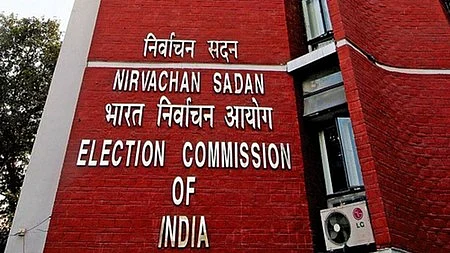International Women’s Day helps us refocus on pressing issues that are facing women. The one issue that touches all sections of us women is India’s tryst with heatwaves. In 2025, it has begun earlier than usual, with the Konkan region in Maharashtra experiencing particularly severe conditions from mid-February.
Lack of winter rains has adversely affected the wheat and barley crops. The large number of women farmers who work here in small farm holdings are already apprehensive about this unseasonal weather.
These women farmers complain about how extreme weather events wreaked havoc on their lives in 2024 when temperatures across the state rose to unprecedented levels, leaving them totally ill-prepared to handle extreme climate change impacts. A database managed by Down To Earth showed that India experienced extreme weather events on 318 days of the 365 days, and, in 2024, the number of days had only increased.
This is alarming news because almost half the country’s population is employed in agriculture for its livelihood, with rainfall remaining their primary source of irrigation. Bhuda bai, who works as a farm labourer in the village of Akroli in Thane district, where this reporter spends six weeks every winter, said, “Last year the heat stress was so intense that we saw our summer crops shrivel and die before our eyes. The water of the nearby Tansa river had dried up, and we had no means to irrigate our crops.”
Women who work outdoors in the informal sector are the most affected. Extreme heat affects crop yields. Physical health and crop yield statistics show that 40 percent of those working in MNREGA are women. Women across western Rajasthan point out that with temperatures crossing 45 degrees Celsius in the summer months, they are no longer able to go to the fields and work due to the scorching summer sun.
According to a study by the International Food Policy Research Institute, climate change is projected to reduce agricultural yields in India by 18.6 percent for wheat and 10.8 percent for rice by 2050. Women account for over 60 percent of agricultural labour and 90 percent of post-harvest work. Women living in villages are also known to spend a disproportionate amount of time every day collecting water.
Not that their urban counterparts are finding the going any easier. Women living in slums across our urban cities complain of poor working conditions that force them to work long hours without proper water or toilet facilities, leaving them fatigued and dehydrated.
The World Bank report reveals that these early heatwave conditions have affected women and children disproportionately, especially those living in low-income communities. There has been found to be a proven link of risk of premature birth and high stillbirth rates caused by extreme heat conditions. This has been further confirmed by the Asian Development Bank, which, in a recent report, emphasised that for every one degree of rise in temperature, there is a 6% increase in premature births, as well as an increase in stillbirths to more than five percent of total deliveries.
The data from the Internal Displacement Monitoring Centre states that India had the highest number of people displaced by climate-related disasters in 2019, with over 5 million people affected. Women and girls are particularly vulnerable to this worsening climate milieu.
The consequences of climate change are being felt across all regions. The Ganges River basin is experiencing unprecedented droughts, floods and other natural disasters. This poses serious challenges to a region where millions of people reside and depend on natural resources for their livelihoods.
Or take women who are part of the fishing communities. The World Wildlife Fund has projected that climate change will reduce fish catches in India by up to 10 per cent by 2050, affecting the livelihoods of over 40 million people. Women in fishing communities are responsible for processing and selling fish and will be directly impacted. As it is, trawlers, whose nets sweep the ocean beds, bring in an excess amount of catch, thereby reducing the catch of fishermen.
If droughts have been found to be slow destroyers, annual floods across the Indo-Gangetic plain are a source of immense human tragedy. This reporter travelled from Patna to Supaul in north Bihar to cover the floods that devastated hundreds of villages in 2008. In the process, some elderly women, who had been shifted to higher areas, found themselves displaced from their families. One such woman presumed this writer was an IAS officer and tearfully asked me, “Please send me back to my family. I cannot live in this camp a minute longer.’’
There is another, more serious problem facing village women. With large tracts of agricultural land being sold to developers to build factories, multi-storied housing and roads, the loss of farmland has also meant a sharp decline in farm-related jobs. The increased use of machinery in farming has also meant that women now need to look for other non-farming options.
The concomitant to unemployment is rising debt levels in farming households. In extreme cases, this agrarian distress is reflected in farmers committing suicide in Maharashtra, Punjab and UP. The National Crime Records Bureau has tabulated 112,000 suicides amongst farmers and farm labourers in the last decade. But these figures are low estimates, and a recent analysis shows that farmers’ suicides in Punjab alone are five times the figure published by the NCRB. Widows, who are left to navigate debt and taking care of their families, admit that continuous drought accelerated by climate change is one of the key reasons for having triggered these suicides.
Surely, by now the government should have prepared Heat Action Plans across each state that would help families cope with the adverse impact of heat. The National Disaster Management Authority and IMD are working across different states to develop HAPs, but given the sharp rise in temperature, HAPs should have been readied and implemented a decade ago.

In the same way, floods are a recurring feature, and by now the NDMA should have strictly implemented proper land use management along the floodplains of our rivers to stop the rampant urbanisation that has taken place under pressure from different land mafias. Till such steps are not implemented, women will continue to suffer.
Rashme Sehgal is an author and an independent journalist










